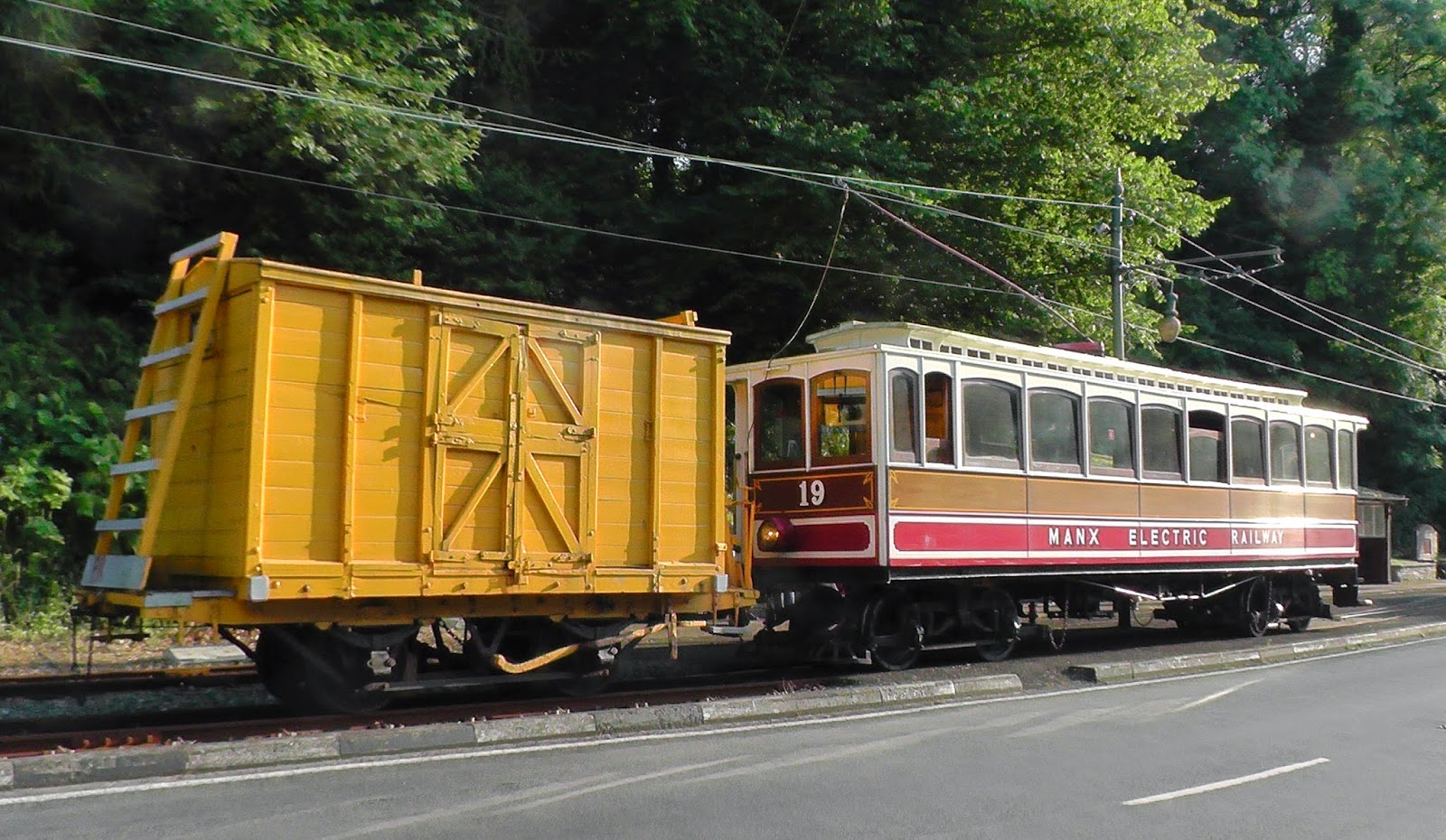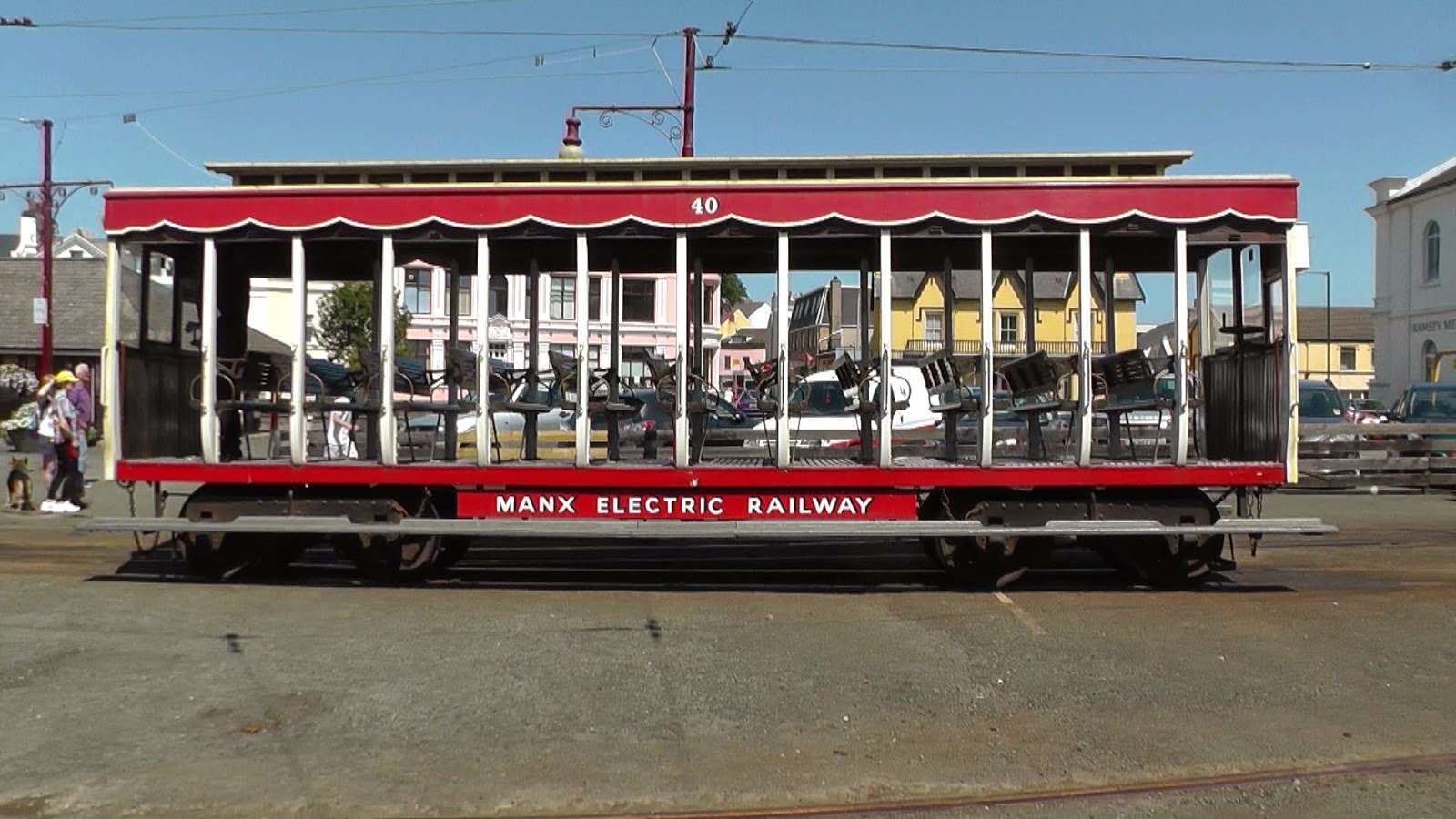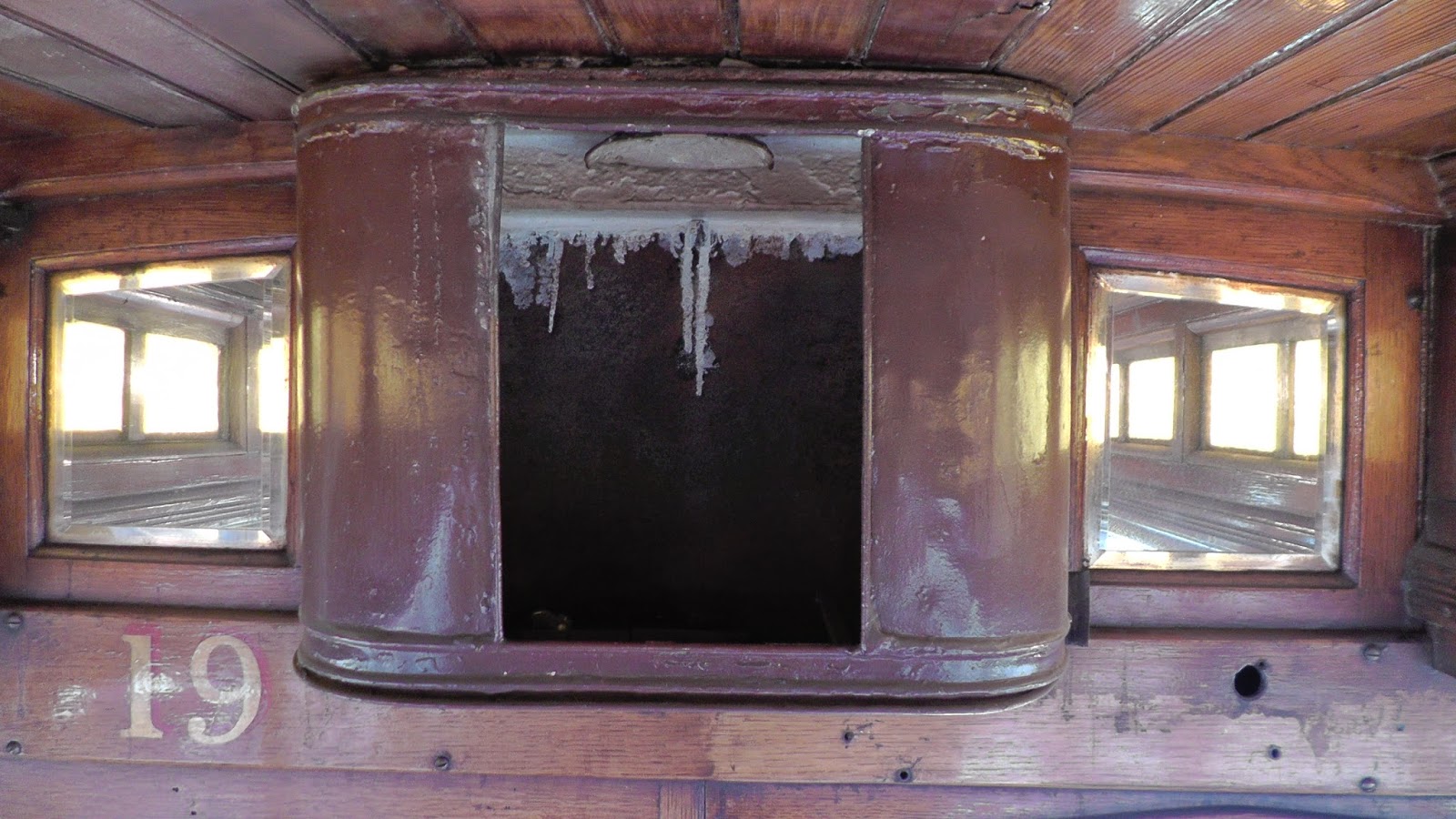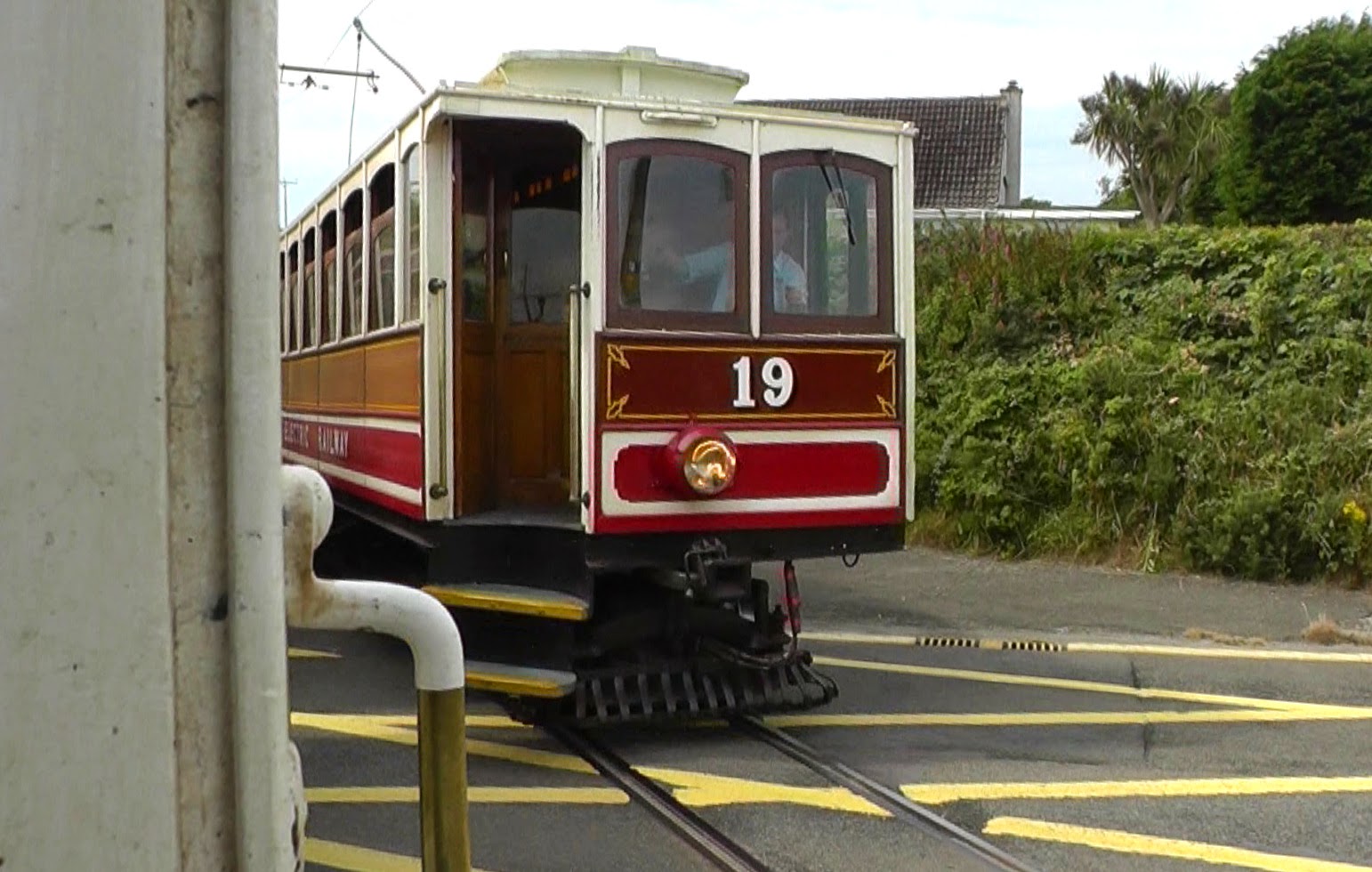 In a nutshell
In a nutshell
Gauge: 3'
Length: 17 miles (27.4 km)
Opened: 1893 - Douglas to Groudle Glen
1894 - Groudle to Laxey
1898 - Laxey to Ballure
1899 - Ballure to Ramsey
Location:
Dates of visits: 23, 24, 26 July 2014
Key Facts
- The railway possesses the two oldest operational tramcars in the world and is noted for its continued use of its original Victorian and Edwardian rolling stock.
- In 1892, permission was granted by the Island's government, the Tynwald, to construct an estate above Groudle Glen provided it was connected to Douglas by a roadway.
- Final permission was granted with the condition that the roadway was equipped with a tramway to be operated by animal, steam, electric, or any other power
- Construction commenced in Spring 1893 and completed in September when the first tram ran. Within 17 days the railway had carried 20 000 passengers at a fare of 3d (1.25p)
- It was decided that the motive power would be electricity and the construction of the tramway was placed in the hands of Mather and Platt of Salford.
- A power station was built at the northern end of Douglas (now Derby Castle) alongside the railway's tramcar depot
- Initially, a single line was provided on the seaward side of the road.
- The line was doubled and extended to Laxey in 1894. Its terminus being where the tram sheds are sited today.
- In the Spring of 1898 the railway was extended to the site of its present station in Laxey after completion of the curved viaduct above the Glen Roy River.
- With two gangs working on the extension to Ramsey (one from the north and the other from the south) the line was opened as far as Ballure in August 1898 and then to Ramsey in July 1899.
- After periods of success and decline in the inter-war period the railway was in a poor state of repair by 1955 when the MER company felt unable to continue running the railway. It was sold and nationalised in 1957.
- A steady period of refurbishment continued until the MER was merged with the nationalised Isle of Man Railway in 1978
- The majority of services are now operated by a Motor car and a Trailer, with some single-Motor operations during periods of low demand.
- The ‘Winter Saloons’, Nos.19, 20, 21, and 22. are mainly used for passenger services with ‘Tunnel Cars’, Nos. 5, 6, 7 and 9 used when demand increases. The ‘Crossbench’ cars Nos. 32 and No.33 are used during the Summer months together with ‘Paddlebox’ car No.16.
- Enclosed Trailers Nos 57, 58 and 59, and 60 are used when the weather deteriorates and Trailer No.56 is used for disabled passengers.
- The railway is usually operations from March to November.
- During the summer the railway usually has 4 to 5 sets working from Derby Castle to Ramsey, with one set stopping over at Laxey during the day.
- The busiest period for the MER each year is during the Isle of Man T.T Period (the end of May to the start of June) when all available tram-sets are in use.
Route
My Impressions
During my week-long stay on the island, I travelled on the MER five times, once for pleasure and the other occasions as a means of transport (and also of course for pleasure - I could have taken the bus).My first encounter with the tramway was as a means of transportation from Douglas to Groudle Glen to enable me to travel on the Groudle Glen Railway during their midweek open evening event. My arrival at the Derby Castle terminus on the north end of the Douglas promenade coincided with the arrival of MER tramcar no. 7 which was part of the second batch of tramcars delivered in 1894, and known as 'Tunnel Cars' because their seating was longitudinal giving the inside of the car a tunnel-like appearance. The original seating was replaced with the more conventional reversible transverse style of seating when the tramcar was restored in 2010.
We boarded the tram ......
..... and took our seats as the motor car took off smartly up the incline towards Onchan Head .......
...... passing the tramcar sheds of the line's main depot on the way.
Before long we arrived at Groudle, where 'Winter Saloon' No. 19 (built in 1899) was waiting on the Up line with one of the line's vans in tow (Van No.12 built in 1898-9)
No. 7 departed on its way to Laxey ........
..... only to provide our transportation for the return journey 2½ hours later. As the sun set behind Douglas we made our descent from Onchan Head back towards the terminus.
My second trip on the MER was the following day, as part of an organised trip from Douglas to Laxey (and thence on to the Snaefell Mountain Railway). Our transportation for the journey turned out to be another Winter Saloon, No. 20 with a trailer No. 40, which dates from 1930.
Our reserved seats were aboard the trailer car which we boarded, ready for the off.
Even with a fully laden trailer, the motor car had no hesitation in climbing the 1:20 gradient towards Onchan Head.
On this occasion we passed the stop at Groudle and then negotiated the viaduct over Groudle Glen which includes the sharpest curves on the railway at each end.
It became apparent why it is called a railway on the approach to Laxey as the railway separated from the road and struck out across the fields .......
..... and passed one of the halts on the railway at Baldrine.
Before long, we crossed the Glen Roy viaduct .......
.... and pulled into Laxey .......
..... where we disembarked.
Before and after travelling to the summit of Snaefell, there was an opportunity to do a bit of tram-spotting at Laxey. Waiting on the Up line was Tunnel car No. 6 with its modified front windscreen, pulling 1930 trailer No. 41.
A little later, 1899 Winter Saloon No. 22 passed through on the Down line.
In 1990, the overheating of a resistor caused Car 22 to catch fire and its bodywork was largely destroyed . A replica body was constructed in 1991 and, it returned to service in 1992. Although the new body matches the original, it now has slightly different headlights and sports a P.A system.
En route to the car park I espied three MER vans being restored in the blacksmith's yard (the blacksmith can just be seen under the green wagon, No. 16 which was built by the MER in 1908 and was used as a mail van. The sister van to No. 12 (above) was also looking resplendent in her restored condition. It's assumed that under the tarpaulin was van No. 3, awaiting its turn for restoration by the Laxey and Lonan Heritage Trust.
My next encounter with the MER was at Ramsey. Rather than taking the tram, our organised trip took us by coach to Ramsey where we had an hour or so to take in the sights (had I known I'd have taken the tram and met them there). I made my way immediately to the tram station to watch the comings and goings.
First to arrive was our transportation for the trip to Laxey; motor car No. 20 with trailer No. 40. After disgorging its passengers, the trailer was uncoupled from the motor car .......
.... and the motor car pulled forward. It then reversed over the crossover on to the Up line.
The brakes were then released on the trailer car .......
........ and it was allowed to roll forward over the crossover.
The motor car was then recoupled to the trailer and shortly afterwards departed. Winter Saloon No. 22 arrived shortly before Car 20 departed and as it was trailer-less was reversed without complication.
My penultimate encounter with the MER was on Saturday 26 July. I had decided to stay on an extra night beyond the allocated time for the organised trip to enable me to visit the Great Laxey Mine Railway which runs only at weekends as it is staffed solely by volunteers.
My transportation for the trip from Douglas to Laxey on this occasion was Winter Saloon No. 19 with trailer No. 40.
Before departure, I took a few shots inside the car to show the driver's compartment .....
...... and pressure gauges for the braking system,
.... some detailing on the sides of the reversible seating, .......
...... the interior of the passenger compartment, ..........
...... what I assumed to be the enclosure for some sort of emergency lighting system, .......
The journey to Laxey was uneventful but when we arrived at Laxey there was an opportunity for a fine shot of the motor car alongside two of the Snaefell Mountain trams before it departed
As the tram and trailer traversed the end of the valley it became visible once more on the other side as it started its ascent towards Ramsey.
Meanwhile, Tunnel Car No.5 was preparing to depart for Douglas. This was the first of the Tunnel Cars to have its bench seating replaced by the more conventional transverse reversible seating - which happened during its refurbishment in 1932. In 1969, its double front windows were replaced with with a single window (as with No. 6 above)
After visiting the Great Laxey Mine Railway I saw my transportation for the return journey arriving; car 20 with trailer 41 in tow.
I made my way to the tram station and boarded the trailer car to make my way back to Douglas
There was an opportunity to catch a last glimpse of the headland above Laxey ......
...... before we passed Car 19 on one of the level crossings. At first, I couldn't understand why our car had stopped in the middle of the crossing, but when Car 19 and its trailer arrived I realised that our car was holding the traffic until the other car had passed. Some motorists may have assumed that once our car had cleared the crossing it would be safe to proceed, not realising another car was approaching.
After passing through Groudle, we were given a view across the cliffs to the Groudle Glen Railway terminus at Sea Lion Cliffs.
We then descended back towards Douglas, passing the tramcar depot at Derby Castle shortly before reaching the terminus.
Before making my way to the ferry terminal, I took a short walk back up to the tram depot where I could just see the two original tramcars. No.1 entered service in 1893 and is in the Guinness Book of Records as the oldest operational electric tramcar in the World.
Its sister, tramcar No.2 (also of 1893), was also evident - both being prepared for an outing the following day.
Also peeping out from its shed was open 'Crossbench' car 33 which was the last motor car to be delivered to the railway in 1906.
Until my visit to the MER, I was not a great fan of tramways - preferring steam motive power for its atmosphere and nostalgia. However, to see tramcars in their original state, still running on their original trackbed has been a real treat and a great eye-opener for me. It's clear why electricity was chosen as the power source for this steeply graded line as the tramcars tackle the gradients with alacrity. The railway runs a regular and efficient service and as the railway hugs the coastline for much of its length, the views are spectacular. I found all the staff I met to be helpful and proud of their part in keeping the railway operational.
What a great way to travel around the island!
















































No comments:
Post a Comment